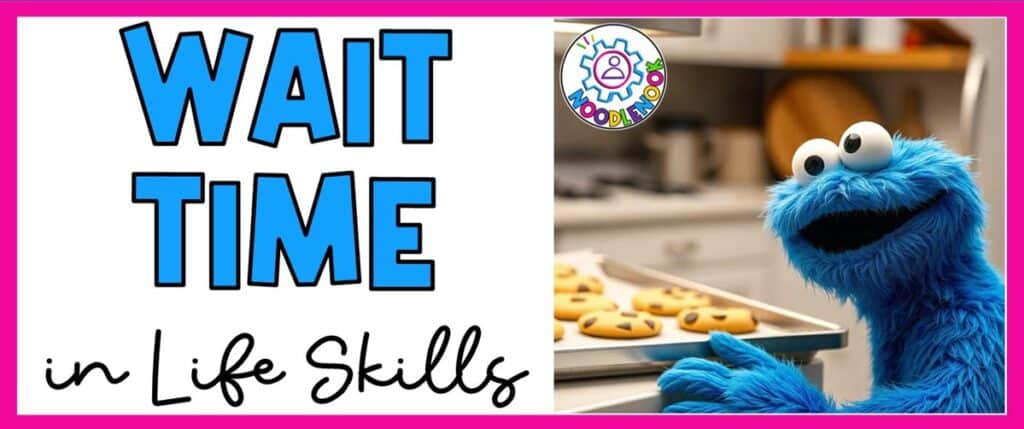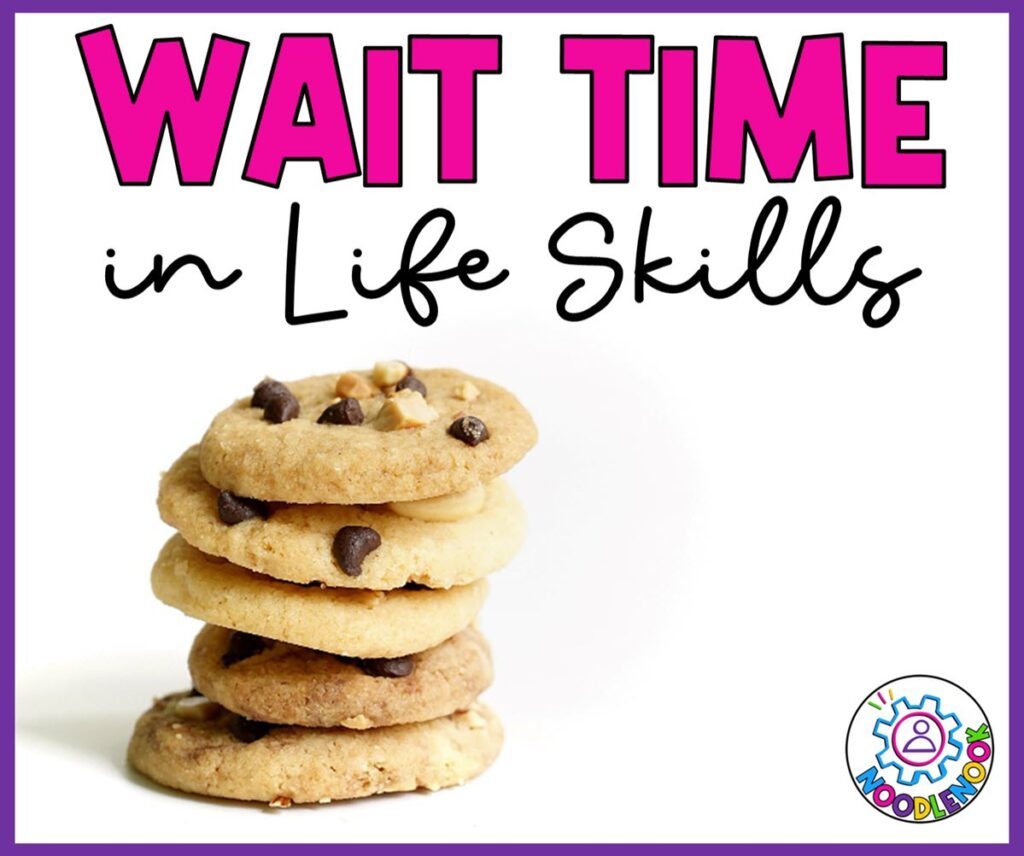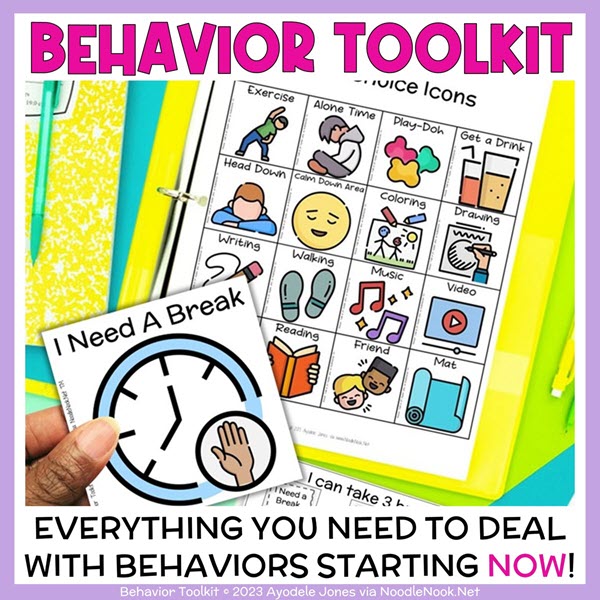When it comes to wait time, are you giving enough? Wait time in LIFE Skills is beyond important, yet most teachers don’t give it… Do you?
I have a 15 year old boy at home who has taken to the “teenage stare”. You know the stare. You ask a question and then said teenager looks you in the face and fails to answer- attitude dripping from every pore. His “teenage stare” always elicits the same response from me. It goes something like this:
“Baby, I work in LIFE Skills- I got wait time all day long.”
I continue to stare at him about two more minutes and then restate the question. Wash, rinse, repeat.
Now… He is starting to really get that his “teenage stare” won’t work because I will wait him out. But what I really love to see is how his expression changes over the two minutes. The face of “I’m not answering.” to “Is she really going to wait?” to “Oh geez. Fine.” Know where I learned that? LIFE SKILLS!!
Thank you LIFE Skills for teaching me about long wait times. The thing that makes me mad is when I travel to classrooms and see that appropriate wait times are not being used. At all!

Wait Time in LIFE Skills with Michelle
This happened this week. I walked into a classroom and said hi to a LIFE Skills student. She looked at me and before she could even process the greeting a para politely said “Say ‘Hi’ Michelle!” (her name is not Michelle, but she reminds me of a Michelle). I looked at her. She looked at the para and then looked back at me. I smiled. The para said again, “Michelle, say hi to her.” I looked at the para. Michelle looked at the para, then she looked back at me. I smiled. “Michelle, say ‘Hi’ already. Didn’t you hear her say hi?” I continued to smile. The para rolled her eyes and walked towards the bookshelf to get some materials. Michelle stood there and, I kid you not, stared at me for about another minute. I kept smiling… finally at close 90 seconds she smiled at me and said ha (which is as close to hi as she can utter). The para hollered “Finally” and Michelle continued on her way.
Wait Time in LIFE Skills is Loooong
Think of all the processing that happened for Michelle. She had to process my verbal message by hearing it, interpreting it, understanding what it meant, thinking of her response, telling her body to make the response, and her body reacting and responding. Within that processing, a para offered beaucoup distractions and additional information that may have required Michelle to start this long process all over again.
Students with speech impairment, auditory processing delays, physical impairments, hearing impairments, and intellectual disabilities all may have problems processing information. So, when you make a request you have to be prepared to wait. And waiting can be a long time. Most general education classroom teachers, when asked to offer wait time after asking a question, only wait an average of a second. They are “trained” to extend that to 3-5 seconds to allow students to process and think. In special education classrooms, the wait time should be extended to at least 10 seconds. For LIFE Skills, you may wait 30-60 seconds to allow enough processing and think time, but possibly more for students who need it. It should feel like this:
Oh my goodness… I am laughing so hard right now. This commercial embodies how I feel when I am offering wait time in LIFE Skills… and this is how it SHOULD feel when you are being successful at offering appropriate wait time- so tell Siri to start the waiting playlist!
No Wait Time in LIFE Skills = Learned Helplessness
We see this all the time. Teachers, paras, principals, secretaries… people talk to a LIFE Skills student or make a request and the child processes slowly. We feel bad that they have to wait (or think if we don’t help they will never get it done) so we jump in and “help”. The thing is we are doing the opposite of helping. We are teaching the student that someone will do it for them.
We all know that kid. Mine was the cutest boy with autism. He was so smart- smart enough to figure out to just wait. Teachers would ask him to write (and he could), but when asked to do a writing activity he would just sit and wait. Eventually someone would come over and tell him what to write: “Write your name.” “Write ‘I like pizza’.” So eventually he learned to stop trying and just wait. Well… ain’t nobody got time for that. It took me about a month. Every time he just sat I would prompt him to start writing. He would hold his pencil and stare at me. I just stared back at him. Eventually (and I mean after a lot of long and awkward silent staring) he would write something. I won. I out-waited him. But he won too. He learned to help himself.
We all have that kid who we find out can really tie their own shoe, open their own silverware, or say hi without prompting or cuing… we just haven’t been giving them enough wait time so they never do. Instead of helping them we are really teaching them to how to NOT help themselves.

So How Do I Add Wait Time in LIFE Skills?
- First off… it is not that easy. Waiting is hard. Teachers have a never-ending list of things to do and things past due but no time to get them done. Waiting for 90 seconds several times a day can seem so wasteful. But you will never waste those moments spent allowing a student to process and respond. You are probably doing more teaching with them in those moments of waiting than you think. So, the first step is to think of wait time as golden time.
- Second, let that wait time be undivided. Don’t ask a question, walk away, and think you are going to come back to a student just gagging to tell you your answer. Be willing to ask and wait.
- Third, don’t be afraid to model what you want. Some of our students have learned to stay silent. Reteaching them what authentic responses are may take some time. Don’t be afraid to recast, model, or even script what the appropriate response should be.
- Fourth, reward. My son is rewarded when he answers me by me getting out of his face. That may not be a great reward for all, but be sure you are using praise when a student does what you’ve modeled.
- Finally, never forget all the processing that is happening for LIFE Skills students when they communicate. It may seem like they are ignoring you, that you are talking to yourself, or that you are waiting for something that will never happen, but we always presume competence and acknowledge that they are in there and aware.
Need Visuals?
Visuals are an essential part of any special education classroom. Do you have the right ones?
Check out this toolkit of guides and visuals that support behavior plans and classroom management. And the guides make it easier to implement thank ever!
Wait, Wait, Wait… What about Wait Time in LIFE Skills for Non-Verbal Students?
What? Some of the kids in your class are nonverbal and, no matter how much wait time you offer, will never talk back? Yeah… I know. But what is their response mode? Whatever it is (VOD, Eye Gaze, Pointing, etc.) you have to offer time to respond and not answer or output for them!
Even when you are working with a student who is verbal, offering a choice as a response can help. That will limit the number of options they have to process through in order to respond. No matter what, allow them the chance by waiting.
So how does this help y’all in the classroom? The same way it helped me. It increased my student’s authentic verbal responses, it increased my student’s level of independence, it increased my student’s overall engagement in the classroom… And all I had to do was wait for it.
Is This Wait Time In LIFE Skills Legit?
So Legit… wondering how the studies on wait time have affected general ed classrooms? According to research by Mary Budd Rowe, the following happens in a general education classroom with the use of just a 3-second wait interval:
- Accuracy increases
- “I don’t know” decreases
- Student responses get longer
- Achievement on tests increases
- More students participate
Wow! Wait time in LIFE Skills is not exactly the same, but you can expect to see:
- Increased participation
- Increased self-generated responses
- Increased engagement
How can you not want to see the benefits of wait time in your LIFE Skills classroom?!? You or Siri can pick a song from your waiting playlist that you can use as your “waiting music” and sing it in your head to make sure you are offering adequate wait time (even if it’s just the A-B-C’s).
Wait Time in LIFE Skills- Survey Says…
Here’s what we know for sure… a study about wait time and the effects on students with disabilities including deafblindness found that
“The combination of communication barriers and inconsistent wait time makes it very difficult for children with multiple disabilities, including deafblindness, to respond appropriately to requests.”
That is according to Nicole Johnson and Amy Parker who go on to conclude that wait time is increasingly important for students with multiple disabilities to be modeled and participate in good communication. They also cite that Special Education Teachers offer the least amount of wait time. Yikes.
Read more about wait time with this article: Wait Time in Special Education
You have to wait. And feel awkward about it. Feel like Cookie Monster… in fact, channel your best Cookie Monster by getting your waiting music in your head and offering a lot of wait time to students. At first it will feel weird. You will be uncomfortable. You will probably feel frustrated, just like Cookie… but after your students get used to your expectations, they will rise to the occasion and maybe even surprise you! Looking to show your staff more on wait time in LIFE Skills? Try this video for your visual learners.




Can’t even tell you how true this is! I am going to bring it to the teacher in my classroom… she is always rushing and overtalking. She needs a Cookie Monster intervention! lol. Great post. Thanks!
I really loved it! Each and every word is true and it’s a fact. Being the mom of 12 yrs old son.. and still facing this issue…I’m thankful for these more practical solutions.
Great post- I would love to be in touch, always!
Dr. Aniqa
I am so glad this information was helpful. I know many people just like you and that’s what keeps me writing.
Share the wealth by pinning, sharing, posting, and getting articles like this one out in front of as many struggling teachers and curious parents as possible!
And I would enjoy staying in touch. Talk to you soon!
You explain this so perfectly. No matter how often I remind and tell my paras they are quick to give the answer or tell the child how to respond. I am going to direct them to read this and see if it helps.
I’m a new para in Life Skills I do use wait time but I was not really a 100 percent sure on how long should I wait… and now I know. Thanks!
Comments are closed.